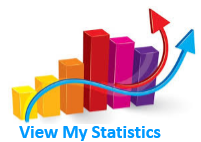FACTORS THAT INFLUENCE FINANCIAL STATEMENT FRAUD AND FINANCIAL DISTRESS: AN INVESTIGATION STUDY
DOI:
https://doi.org/10.26418/apssai.v1i1.5Keywords:
Altman Z-Score, Beneish M-Score, Financial distress, Financial statement fraud, Fraud diamond theory.Abstract
This study aims to analyze the factors of the Fraud Diamond Theory, Change in Auditor, Capability, Financial Targets, External Pressure, and Ineffective Monitoring in the occurrence of Financial Statements Fraud and Financial Distress. Using logistic regression analysis method to test the data, the results showed that External Pressure affected Financial Statements Fraud and Financial Targets affected Financial Distress. Meanwhile, Change in Auditor, Capabilities, Financial Targets, and Ineffective Monitoring had no effects on Financial Statements Fraud and External Pressures had no effects on Financial Distress. In addition, when Financial Distress was connected with Financial Statements Fraud, the result of the study showed that there was no influence between Financial Distress and Financial Statements Fraud. Thus, it is advisable that auditors, investors, creditors, and management work in synergy with each other in preventing and protecting from the occurrence of financial statement fraud by observing the indicators which trigger fraud in a company.
Downloads
Published
How to Cite
Issue
Section
License
Copyright (c) 2021 by Authors

This work is licensed under a Creative Commons Attribution 4.0 International License.
License
APPSAI Accounting Review is licensed under Creative Commons Attribution 4.0 International License.
You are free to:
- Share — copy and redistribute the material in any medium or format for any purpose, even commercially.
- Adapt — remix, transform, and build upon the material for any purpose, even commercially.
- The licensor cannot revoke these freedoms as long as you follow the license terms.
Under the following terms:
- Attribution — You must give appropriate credit , provide a link to the license, and indicate if changes were made . You may do so in any reasonable manner, but not in any way that suggests the licensor endorses you or your use.
- No additional restrictions — You may not apply legal terms or technological measures that legally restrict others from doing anything the license permits.
Copyright
Authors retain copyright and grant the journal right of first publication with the work simultaneously licensed under a Creative Commons Attribution 4.0 International License that allows others to share the work with an acknowledgment of initial publication in this journal.
Authors are permitted and encouraged to post their work online (e.g., in institutional repositories or on their website) before and during the submission process, as it can lead to productive exchanges and earlier and greater citation of published work (See The Effect of Open Access).



